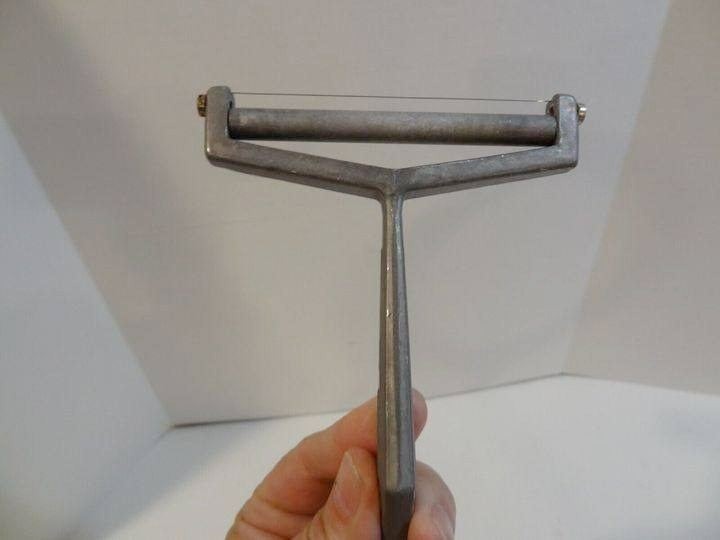ADVERTISEMENT
### **The 20th Century: Innovations in Knife Design and Materials**
The 20th century saw a number of groundbreaking innovations in the design and materials used to make kitchen knives. Stainless steel, which was invented in the early 1900s, revolutionized knife-making. Stainless steel is resistant to corrosion, stains, and rust, making it the ideal material for high-quality kitchen knives that would last for years with proper care.
In addition to stainless steel, the 20th century also saw the introduction of new materials such as ceramic and carbon fiber for knife blades. These materials offered distinct advantages, such as extreme sharpness and lightness, and became popular in high-end knives for both professional chefs and home cooks.
As culinary techniques advanced, so did the demands on kitchen knives. Chefs and home cooks alike sought knives that could offer greater precision, comfort, and durability. Innovations in ergonomic handles, balanced blades, and lighter-weight designs made it easier to use knives for extended periods without fatigue. In fact, many of today’s high-end knives are made using state-of-the-art technologies like laser sharpening and advanced heat treatment processes, making them sharper and more durable than ever before.
### **Modern Kitchen Knives: A World of Choice and Specialization**
Today, kitchen knives are available in an astonishing variety of shapes, sizes, and materials. From the traditional forged steel knives of Germany and Japan to the high-tech ceramic knives that promise ultimate sharpness, there is a knife for every task and every chef. The global kitchen knife market offers an array of options, each designed to cater to specific needs—whether it’s the precision of a Japanese Santoku knife or the rugged versatility of a Western-style chef’s knife.
Modern kitchen knives are not only functional but also aesthetic. Many chefs and home cooks appreciate the beauty of handcrafted knives, which are often created by artisans using centuries-old techniques passed down through generations. These knives, while not cheap, are often considered heirlooms, prized for their craftsmanship, durability, and the unique story behind their creation.
The evolution of kitchen knives has led to a more refined and specialized approach to cooking. Professional chefs often have several different types of knives in their toolkits, each designed for specific cutting techniques. Even home cooks now enjoy the convenience of owning a set of knives that can tackle everything from delicate fish filleting to hearty meat carving and vegetable chopping.
### **Cultural Significance and Symbolism of the Kitchen Knife**
While kitchen knives are undeniably practical tools, they also hold cultural significance. In many cultures, knives are symbols of power, precision, and status. In Japan, for example, the crafting of knives is regarded as a high art form, and many chefs take great pride in owning a handmade knife from a skilled artisan. Japanese knives, particularly those made by traditional blacksmiths in regions like Seki City, are revered for their craftsmanship and are often passed down through generations.
In Western cultures, the kitchen knife also carries symbolic weight. The chef’s knife, in particular, represents expertise in the kitchen and is often associated with professionalism and culinary mastery. Many professional chefs view their knives as extensions of their hands, tools that enable them to achieve culinary excellence.
Beyond their functional use, knives are also involved in rituals and symbolism. In many cultures, knives are used as part of ceremonies, such as weddings, where a knife might symbolize the cutting of the cake, or in certain traditional feasts, where the knife is central to the carving of the meat. Knives are often given as gifts or used as symbols of honor and respect.
### **Conclusion: The Enduring Legacy of the Kitchen Knife**
The kitchen knife is far more than just a tool—it is a testament to human innovation, craftsmanship, and cultural significance. From its humble beginnings in the hands of early humans who used stone tools to today’s precision-crafted knives, the history of the kitchen knife reflects the evolution of human civilization itself.
As we continue to innovate and refine the tools we use in our kitchens, one thing remains clear: the kitchen knife is an enduring symbol of the art of cooking. Whether you’re a professional chef or a home cook, the kitchen knife is a constant companion, helping you create delicious meals and connect with a tradition that spans thousands of years.
The next time you pick up a knife in your kitchen, remember the long and fascinating history behind this remarkable tool—one that has been with us since the dawn of civilization and continues to shape the way we cook today.
